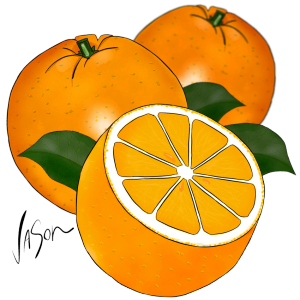by Jason Ford
Ford on Food
It’s true that you can’t compare apples and oranges; but you usually have to be in the mood for either.
There are times that I’m more in the mood for oranges, particularly juiced at breakfast time.
Oranges are a member of the citrus family and are closely related to grapefruits, lemons and limes.
Around the world, there are many varieties of oranges that vary from sweet to bitter flavoured.
The sweet type is often eaten fresh or squeezed for juice, while the bitter kind is usually cooked into marmalades or citrus flavoured savoury dishes.
Although oranges are ironically orange in colour, there are some with blood red flesh.
Apart from the flesh and juice, the outer skin of the orange can be grated or cut into thin strips to form a zest used in bakery and confectionery items.
It’s the naturally formed oils concentrated in zest that impart their citrus aromatics into orange flavour liqueurs such as Cointreau.
The two most common varieties of orange available in Australia are:
- Navel, which are a perfumed, sweet and juicy fruit. They have a thick skin that is easy to peel and often don’t contain seeds, which makes them ideal for peeling and eating fresh as a healthy snack. They are also great pureed whole and baked into a flourless cake. Navel oranges are easily recognised due to a button shaped dimple on top.
- Valencia, can also be sweet in flavour, have a thinner skin and a lot of juice with a few seeds. Therefore, they are great for juicing. The juice can be used as a beverage or churned into sorbet. Valencias have a star shaped stem.
Oranges contain heaps of vitamin C, antioxidants and are a good source of folate.
* * *
Orange Butter Sauce
 This recipe is spectacular with many desserts, such as chocolate tart, crepes and pancakes, with bread and butter pudding, or simply poured over ice cream.
This recipe is spectacular with many desserts, such as chocolate tart, crepes and pancakes, with bread and butter pudding, or simply poured over ice cream.
Ingredients:
- 50g caster sugar
- 25ml water
- 160ml orange juice (fresh squeezed)
- 60g unsalted butter
- pinch salt
Method:
- Place sugar and water in a heavy based saucepan
- Bring to the boil and then turn down to a gentle simmer
- Simmer until a light caramel colour is achieved
- Add orange juice and continue to simmer until reduced by half
- Remove from heat, and while still hot, then gradually whisk in small cubes of the butter until emulsified
Serves 4.
























